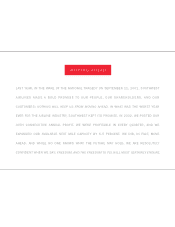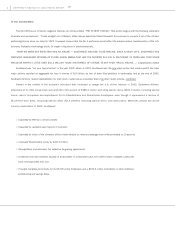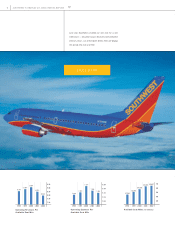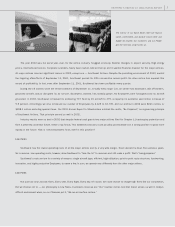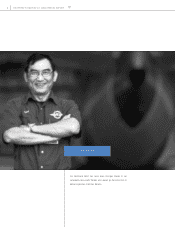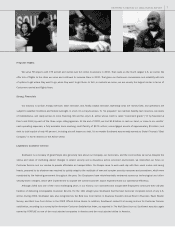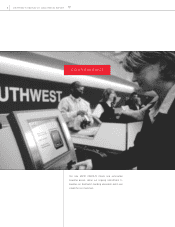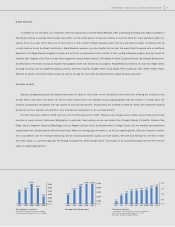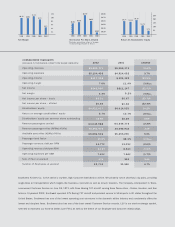Southwest Airlines 2002 Annual Report Download - page 12
Download and view the complete annual report
Please find page 12 of the 2002 Southwest Airlines annual report below. You can navigate through the pages in the report by either clicking on the pages listed below, or by using the keyword search tool below to find specific information within the annual report.
Southwest airlines co. 2002 annual report
10
The Airport Experience
For our industry and air travelers, 2002 was a year of dramatic change in airport security, resulting from the terrorist attacks on America in 2001.
First, the federal government, through the Transportation Security Administration (TSA), assumed full responsibility for airport security in February
2002. By November 2002, federal employees had replaced virtually all contract airport security-related personnel. Since September 11, 2001, new
procedures have been instituted to screen checked bags for explosives; screen carryon bags for weapons and/or explosives; match bags checked
to passengers onboard; and positively identify all Customers. Effective December 31, 2002, all checked bags are now screened for explosives,
as mandated by federal law.
For the industry and our Customers, these changes initially presented challenges. Checkin times were longer and so were checkin lines.
Customers were forced to arrive earlier, creating more airport congestion. Fortunately, these new processes have been streamlined,and checkin times
are mostly back to normal. To facilitate this, Southwest changed several longtime procedures with automation. We implemented computer-generated
baggage tags to electronically capture bags checked by Customers. We implemented computer-generated boarding passes from multiple points in
the airport. This allows us to identify the Customer by name for boarding purposes and allows the Customer a more convenient checkin through
standing in fewer lines. We also implemented self-service boarding pass kiosks, or RAPID CHECK-IN, to allow our Customers plenty of options to acquire
boarding passes and alleviate checkin lines at ticket and gate counters. And we eased the airport workload for our Employees and Customers by
allowing for Rapid Rewards credit at time of reservation rather than at the airport, which means one less step for our Employees and greater
convenience for our Customers. Our Employees responded to dramatic changes at the airport in typical Southwest fashion. The results are superb.
Sales and Distribution
Southwest leads the industry in Customer satisfaction, particularly the ease with which Customers can buy seats on Southwest Airlines.
Southwest operates nine reservations centers with more than 4,000 Southwest Reservations Sales Agents, who handle a variety of different
Customer Service tasks. Thirty percent of Southwest’s sales are handled through Southwest reservations centers. Travel agents are valued partners
of Southwest and handle almost 20 percent of sales, earning a five-percent commission, the highest in the airline industry. Southwest’s newest sales
distribution avenue is the Internet, via southwest.com, which now accounts for almost 50 percent of Southwest sales. Customers find the low fares
they desire in a user-friendly way. And it is cost-effective for Southwest, as well.
All-Jet Fleet
Southwest operates an all-coach, all-Boeing 737 fleet of 375 aircraft, as of the end of 2002. All 413 orders, options, and purchase rights with
The Boeing Company for 2003 through 2012 are B737-700s. The average age of this young fleet is 9.2 years. As the -700 model is our future, we
are in the process of retiring our -200 fleet over the next three years. Since 2001, we have been renewing our fleet with fresh new interior and
exterior looks complemented by comfortable leather-covered seats.


